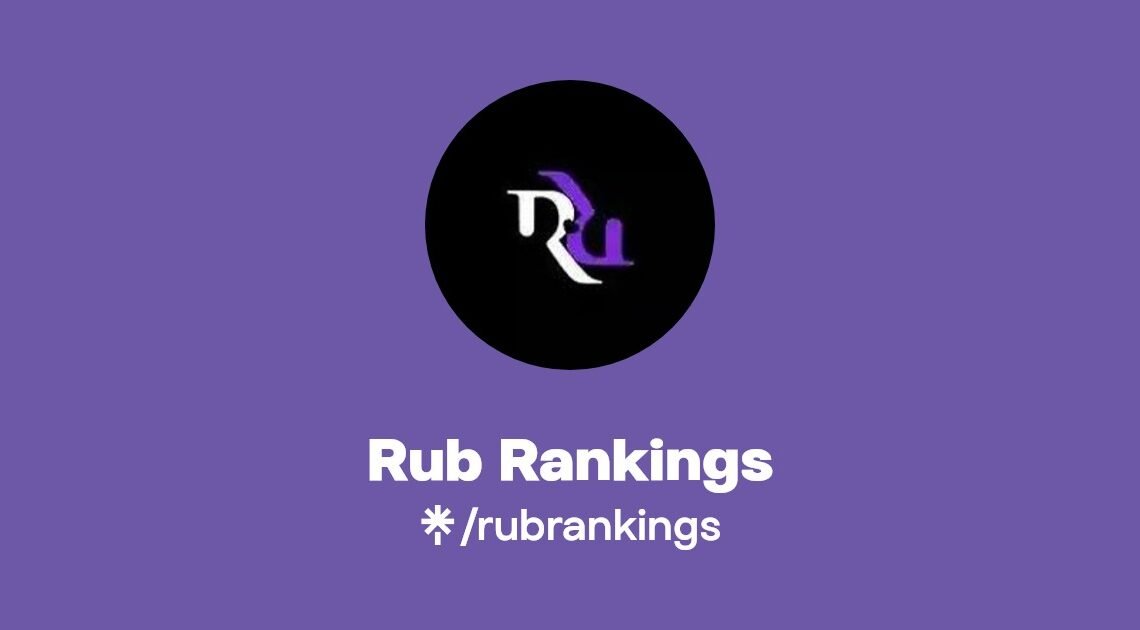In the competitive and overwhelming world online, placement holds different meanings to success; it is everything. Search engines, e-commerce websites, online review sites, and many others maximize their marketing efforts to appeal to customers and provide them with the best service. In the digital marketing and SEO world, a relatively new term has emerged that is sure to pose a threat with its latest concept of user experience: rub ranking.
What is it, and why is it relevant in 2025? In this blog, I will discuss the definition and reasoning behind what makes it so important, its implications for SEO and marketing experts, and practical techniques to enhance it. You are at the right spot for those interested in understanding how rub ranking affects online visibility, consumer confidence, and revenue.
Table of Contents
What is Rub Ranking?
Rub ranking is how platforms, algorithms, or systems assign visibility levels to businesses, websites, or content based on specific engagement and qualitative metrics. Originating from user experience research, it emphasizes the nuanced relationship between raw data (like clicks or views) and the quality of those interactions.
Rub-ranking isn’t tied to one specific industry but applies across numerous platforms, from Google search results to e-commerce marketplaces. It essentially “rubs” together engagement factors (like time on page or feedback quality) with content performance, resulting in rankings prioritizing relevance and trustworthiness.
Key Factors Affecting Rub Ranking
Several factors are known to shape rub-ranking across industries. These include:
- User Engagement: Metrics like time spent on a page, bounce rate, and interaction quality factor heavily into rub rankings.
- Customer Reviews and Feedback: Positive reviews improve rub-rankings by signaling trust, while poor reviews can degrade your position.
- Algorithmic Decisions: AI algorithms incorporate relevant models to assess rub-ranking by integrating relevance, content quality, and user satisfaction.
- Industry-Specific Parameters: For e-commerce, these could be conversion rates or product return ratios. For SEO, it might involve keyword relevance and backlinks.
For example, Google’s search algorithm and Amazon’s product ranking systems are prime real-world cases where rub-ranking plays a pivotal role.
How Rub Ranking Impacts Online Performance
Rub-Ranking and SEO
Rub ranking is emerging as a crucial factor in search engine optimization. Unlike traditional SEO metrics focusing solely on keywords or backlinks, rub ranking considers how users engage with and derive value from your content. A high rub-ranking can:
- While improving visibility on search engine result pages (SERPs) has advantages.
- Signaling high quality and trust will improve click-through rates (CTR).
- Outperforming competitors who utilize non-friendly methods will drive organic traffic.
For instance, websites with longer dwell times outrank those with shallow content, even if both have similar keyword optimization strategies.
The Impact on Consumer Trust and Decision-Making
It directly influences consumer trust. Most shoppers check ratings and reviews before purchasing anything online. A higher rub ranking is highly favorable and adds credibility; thus, users are more likely to rely on your business than others.
Psychologically, rub-rankings act as a shortcut in decision-making. Users often trust high scores or rankings to signal quality, simplifying purchasing decisions. This is why maintaining a healthy rub-ranking is vital for marketing.
The Role of Rub Ranking in Digital Marketing
Boosting Brand Awareness
When your rub ranking improves, so does your brand’s reach and visibility. Outstanding rub rankings make customers view your business as credible and reputable—these companies with high rankings focus on outperforming competitors to gain a more significant market share.
Your audience will trust your brand after seeing search ranking placements and listed linked ads with rub-ranking positioned right under the ad listing above.
Rub Ranking and Conversion Rates
Higher rub rankings are directly correlated with increased conversion rates. Investing in engaging users, collecting favorable reviews, or improving website performance will guarantee that any business will experience a good increase in customer retention and lead acquisition.
Many studies prove that 90% of customers will purchase something online after seeing projected positive and trusted reviews. Rub-ranking feeds into this cycle by ensuring that credible interactions push your business to the forefront.
How to Improve Your Rub Ranking
Key Strategies for Boosting Rub-Ranking
Here are some actionable tips to improve your rub ranking:
- Enhance User Experience
- Navigating through and viewing the website is super easy, mobile-friendly, and fast. These things help to retain users on the website. Great design captures users’ interest while lowering bounce rates, which is why users leave the page.
- Encourage Positive Feedback
- Always reply to feedback, no matter how negative, while actively asking for reviews from satisfied customers.
- Invest in Content Quality
- To keep your audience engaged, create relevant content that is both educational and informative about your website. This will make them stay longer and will garner their interest.
- Optimize Engagement
- Include interactivity features like a comment section, video, and polls so that more people can interact meaningfully with them.
Following these traditional practices will guarantee good visibility and long-term audience trust.
Common Mistakes to Avoid
Avoid these pitfalls to maintain a healthy rub-ranking:
- Ignoring user feedback, especially repeated complaints.
- Overloading your content with keywords to manipulate SEO rankings (search engines penalize thin or misleading content).
- Neglecting website performance leads to high bounce rates.
Rub-Ranking in 2025: What’s Next?
Trends Shaping the Future of Rub Ranking
Rub ranking is poised to grow even more influential. Emerging trends likely to shape its future include:
- AI and Machine Learning: Intelligent systems will make rub-ranking even more precise by analyzing real-time user patterns.
- Personalization: Consumer-centric approaches, such as personalized search results or tailored e-commerce experiences, will increasingly define rankings.
- Data Privacy: With stricter privacy laws, platforms will reevaluate how they collect and use user data to calculate rub-rankings.
Preparing for Changes in Rub-Ranking Algorithms
To adapt to these changes:
- Stay updated on algorithm adjustments from search engines or platforms critical to your industry.
- Invest in tools that monitor user behavior and offer analytics for better optimization.
- Focus on building authentic relationships with users, as trust will likely dominate rub ranking outcomes in the coming years.
Take Charge of Your Rub Ranking Today
Comprehending rub ranking is more than maintaining a competitive edge; it is equally about creating a brand that customers believe in and interact with. These strategies can help your business increase brand visibility, customer loyalty, and overall performance in 2025 and beyond.
Start by assessing your current rub-ranking using reliable feedback tools or analytics platforms. Don’t be afraid to experiment, adapt, and innovate as technologies and customer expectations evolve.
M
Unlock More: Subscribe for in-depth stories, tips, and updates straight to your inbox!


 Unlocking the Power of adsy.pw/hb3 for Your SEO Strategy
Unlocking the Power of adsy.pw/hb3 for Your SEO Strategy  The Ultimate Guide to Faceless Digital Marketing for 2025
The Ultimate Guide to Faceless Digital Marketing for 2025  Digital Marketing Zanzibar: Best Strategies for 2025
Digital Marketing Zanzibar: Best Strategies for 2025